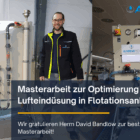Biologically activated filtration (BAF) is a water and wastewater treatment process that combines biological and physical processes to remove organic matter, nutrients (such as nitrogen and phosphorus) and other contaminants from water. In contrast to conventional filtration systems, which work purely physically, biologically activated filtration uses the ability of microorganisms to break down pollutants in the water. These microorganisms are colonized on a special filter medium and form a biofilm that efficiently breaks down the impurities in the water.
Table of contents
Technical background
In a biologically activated filtration the water flows through a filter medium consisting of a porous material on which microorganisms grow and multiply. These microorganisms metabolize the organic substances and nutrients in the water and convert them into harmless end products such as carbon dioxide (CO₂), nitrogen gas (N₂) and water. The filter not only acts as a physical barrier, but also provides an ideal surface for microorganisms to colonize.
Biologically activated filtration is often used in combination with other processes, such as reverse osmosis or membrane filtration, to minimize the residual load before fine filtration and reduce the risk of biofouling.
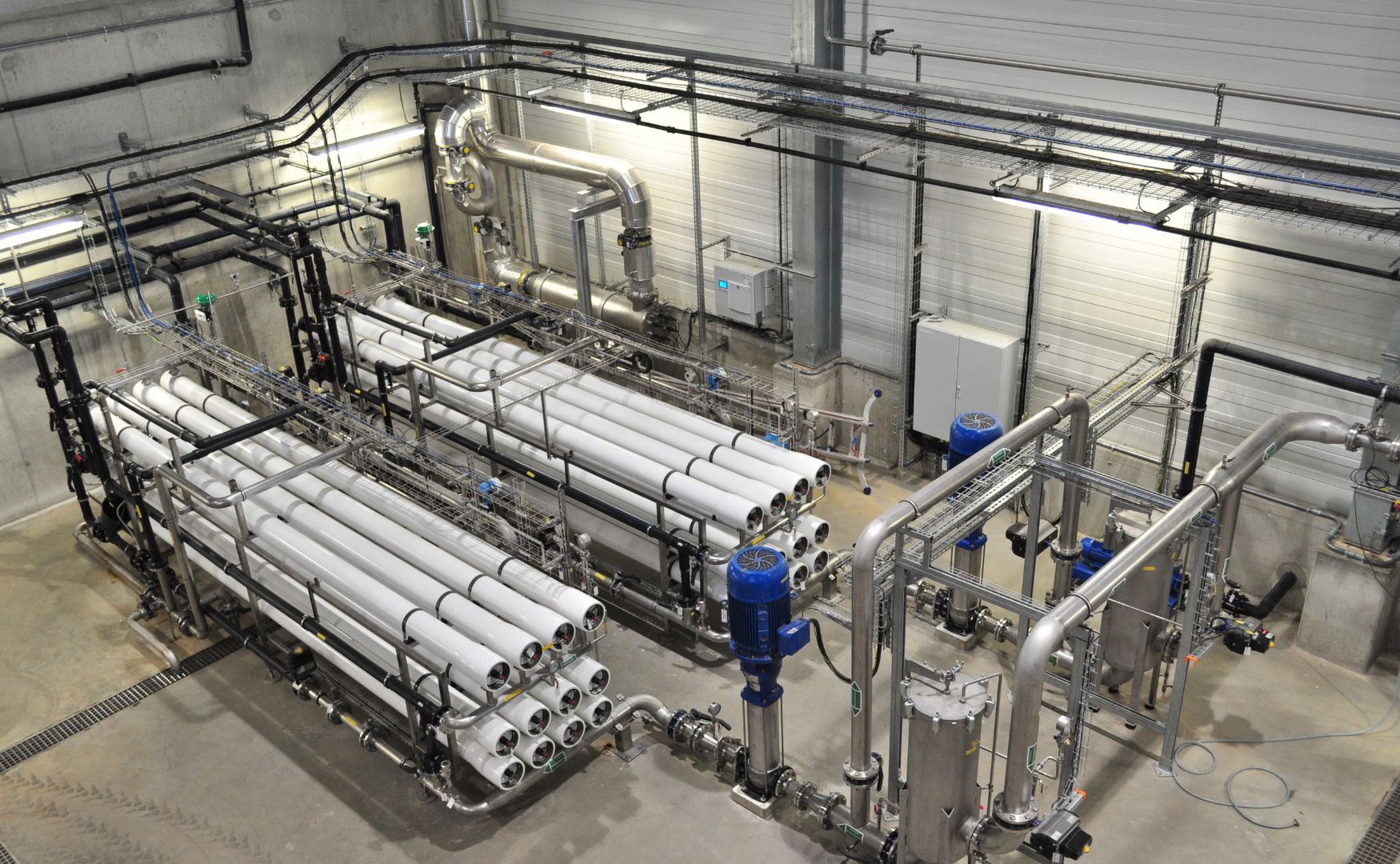
Photo: ALMA BHU BiosS-Treat reverse osmosis system for recovering process water from wastewater
Functional principle
The heart of a biologically activated filtration system is the filter medium, which consists of either synthetic materials, sand, diatomaceous earth or processed clay beads. The filter medium serves as a growth medium for microorganisms, which colonize the surface in a biofilm. The water to be treated is passed through the filter and the microorganisms break down the organic compounds and nutrients contained in the water.
The central biological processes include
Carbon decomposition: Organic substances dissolved in the water are metabolized by the microorganisms and converted into carbon dioxide and water.
Nitrification and denitrification: In two successive biological processes, ammonium (NH₄⁺) is first converted into nitrate (NO₃-) (nitrification) and then reduced to nitrogen gas (N₂) under anoxic conditions (denitrification). This contributes to the efficient removal of nitrogen compounds from the water.
Application of biologically activated filtration
Biologically activated filtration is used in various industrial areas and applications, particularly in wastewater treatment and process water treatment. It is generally used as pre-treatment for other technologies such as reverse osmosis systemsto reduce the residual load and minimize the risk of membrane blockage and biofouling.
Application examples:
Water recycling and water reuse: In industrial water treatment, biologically activated filtration is often used to produce process water from wastewater. The targeted degradation of organic residues significantly improves the water quality before the water is returned to the production cycle for reuse or used as pre-treatment for membrane filtration systems.
Food and beverage industry: Typical wastewater, such as vapor condensates from food processing, contains residual organic contaminants that can be efficiently removed by biologically activated filtration. This is particularly relevant for the economical operation of reverse osmosis systems in process water treatment.
Cooling water treatment: Biologically activated filtration can also be used in cooling water circuits to remove organic and inorganic compounds that increase the risk of biofouling or corrosion.
ALMAWATECH solutions: ALMA BHU BAF and ALMA BioFil Compact
ALMAWATECH offers two specialized biofiltration solutions that are used for biologically activated filtration:
1. ALMA BHU BAF
The ALMA BHU BAF (Biologically Activated Filtration) is a large-scale solution for water flows of up to 1,000 m³/h. This system is particularly suitable for industrial applications with high water treatment requirements and is realized in concrete construction. It offers efficient biological pre-treatment, which reduces the risk of biofouling and extends the membrane service life in downstream membrane processes.
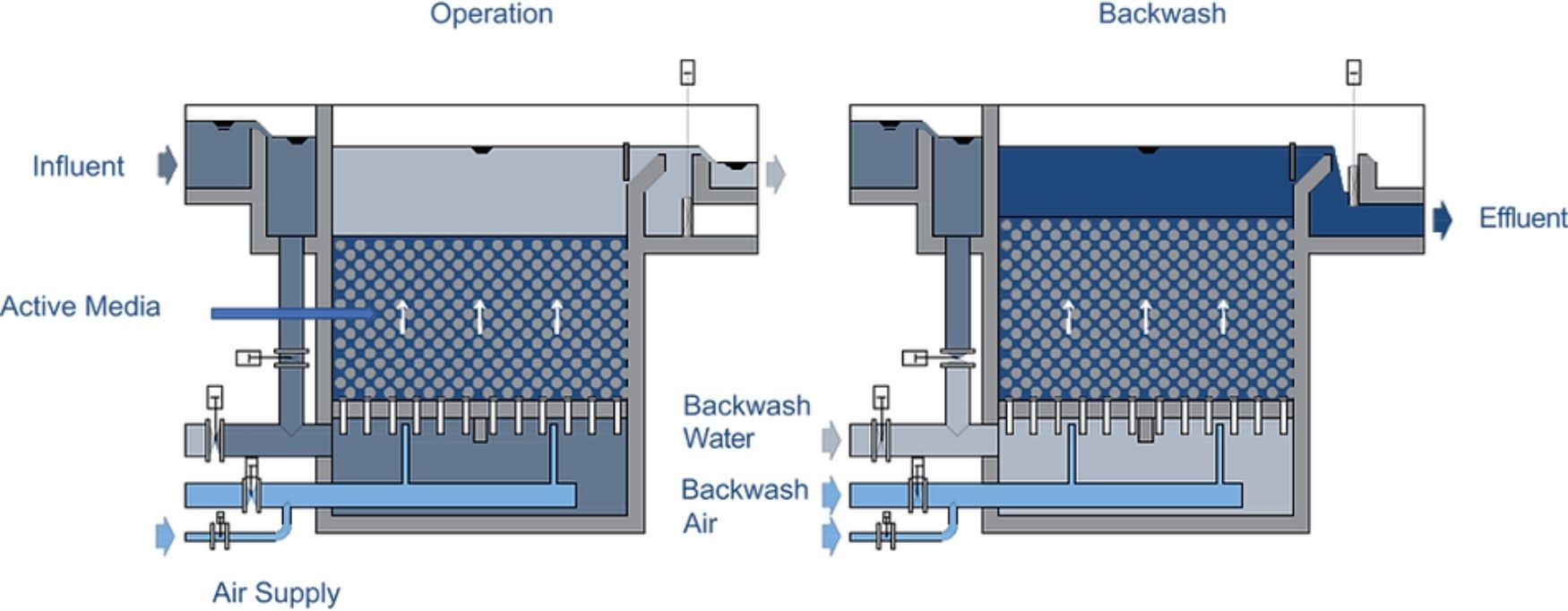
Photo: Biofiltration ALMA BHU BAF, process diagram
2 ALMA BioFil Compact
The ALMA BioFil Compact is a compact biofiltration solution for wastewater flows of up to 100 m³/h. It is ideal for smaller systems and specific applications where organic residues and nitrogen compounds need to be removed. This system is often used as pre-treatment for reverse osmosis systems and helps to prevent membrane fouling and increase the efficiency of the water recycling process.
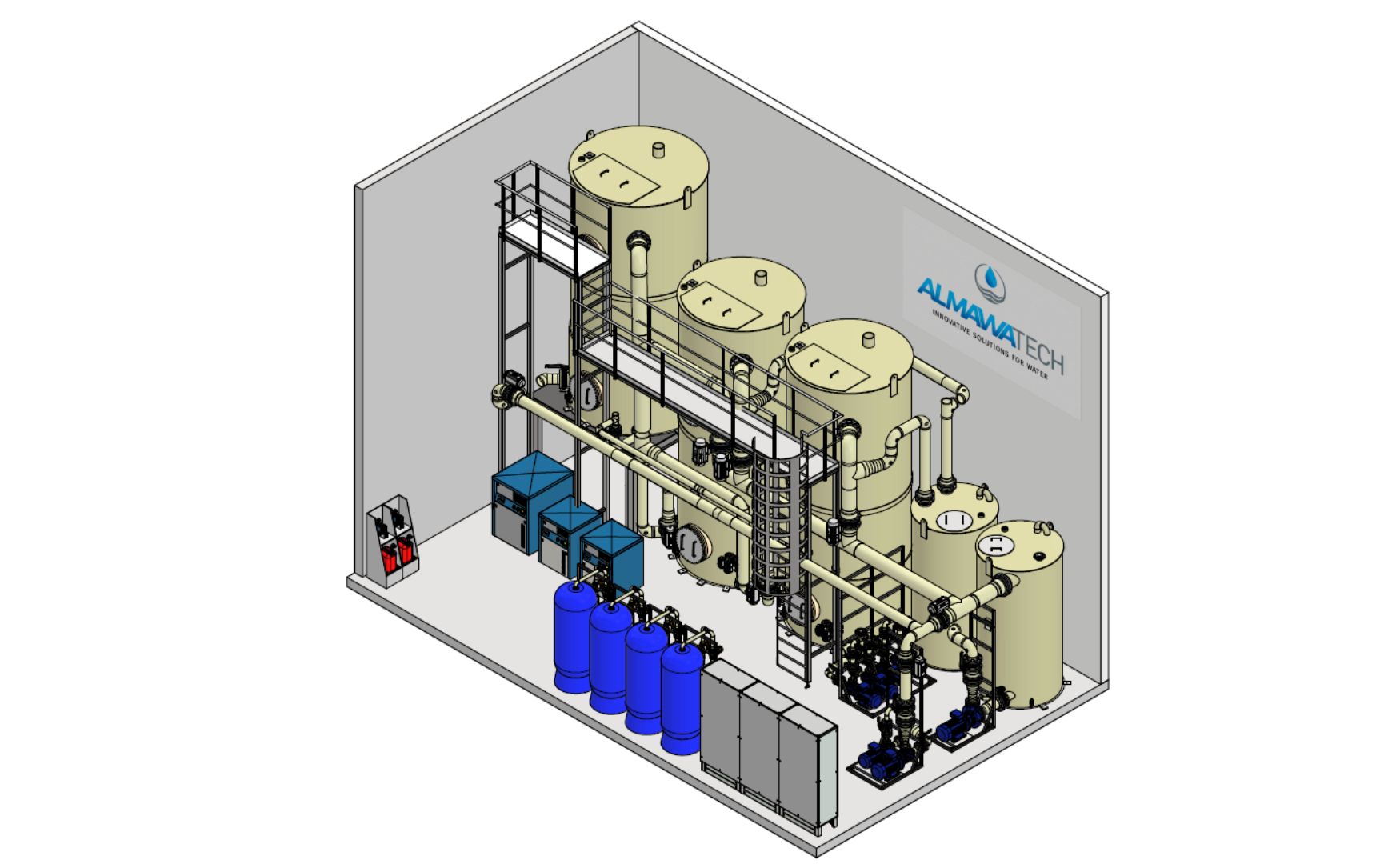
Photo: ALMA BioFil Compact biofiltration system, 3D design
Advantages of biologically activated filtration
Efficient removal of organic and inorganic substances: By combining biodegradation and filtration, organic residues and nitrogen compounds can be effectively removed from the water. This leads to improved water quality and enables the economical operation of downstream systems such as reverse osmosis or nanofiltration.
Prevention of biofouling: By specifically breaking down organic substances before membrane filtration, biologically activated filtration reduces the risk of biofouling. This extends the service life of the membranes and reduces cleaning costs.
Lower operating costs: As the biologically activated filtration is largely based on natural biological processes, the use of chemicals is significantly lower than with purely chemical treatment processes. This reduces operating costs and minimizes the impact on the environment.
Combinability with other technologies: The biologically activated filtration can be seamlessly integrated into existing water treatment processes and can be used as a pre-treatment for membrane processes or as an independent purification stage.
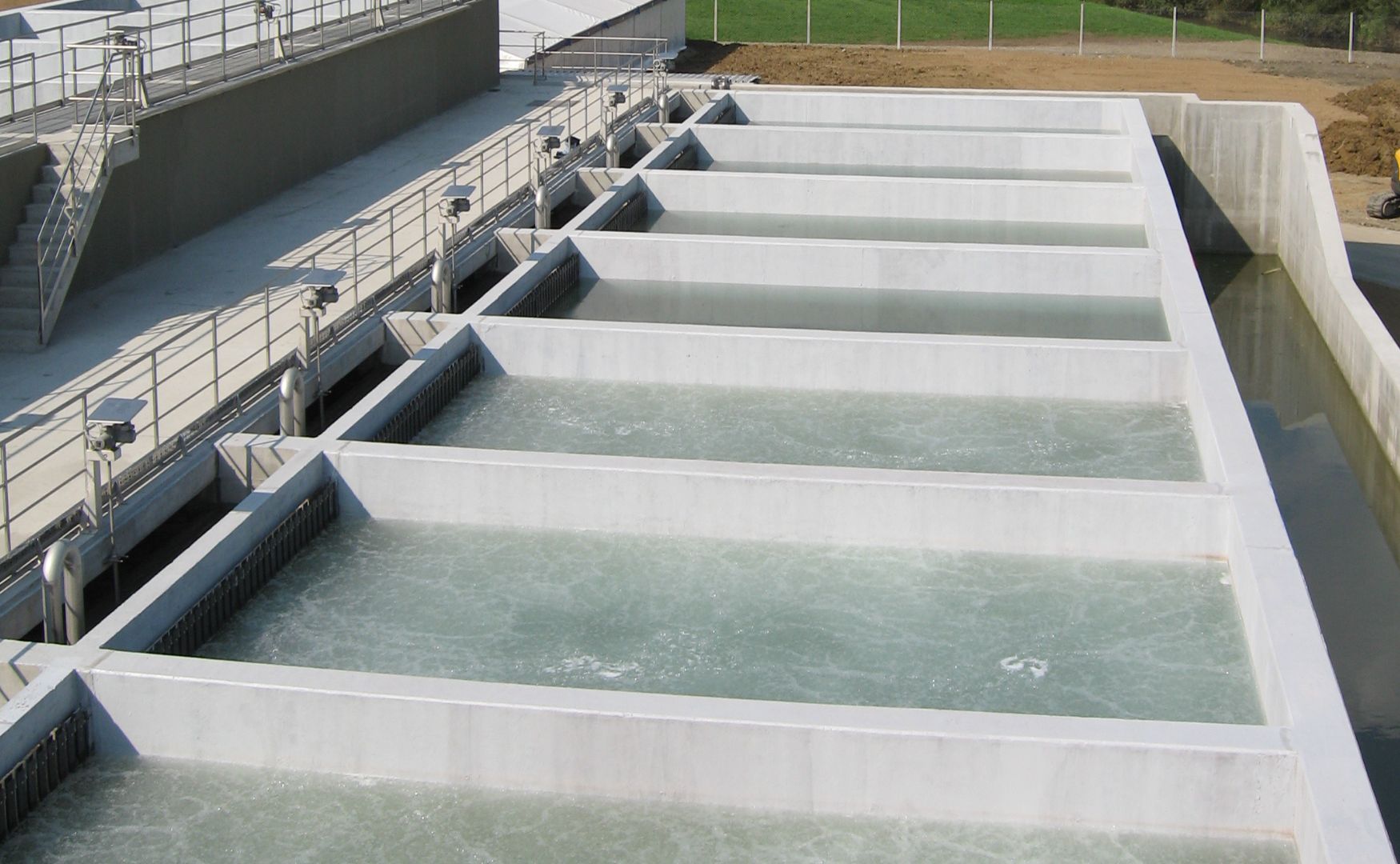
Conclusion
The biologically activated filtration is a proven and sustainable method for the treatment of wastewater and process water treatment. Through the targeted use of microorganisms to eliminate organic substances and nutrients, this technology helps to improve water quality and protect downstream systems such as reverse osmosis and nanofiltration from biofouling.
With products such as the ALMA BHU BAF and the ALMA BioFil CompactALMAWATECH offers customized solutions for various applications and water flows. Biologically activated filtration enables cost-efficient and environmentally friendly water treatment that meets the increasing requirements for water recycling and process water treatment.





